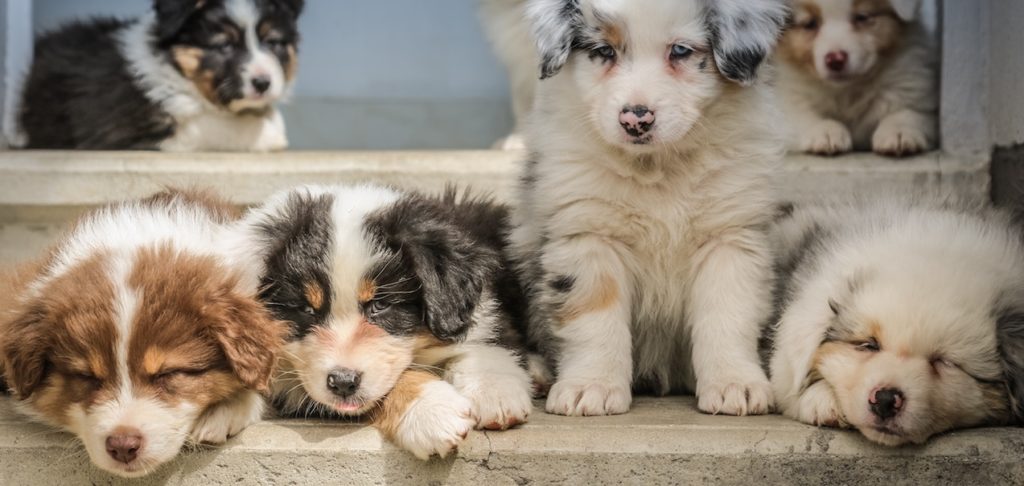It happens.
Owners of even the best-trained and most-loved pets will have to deal with pet urine accidents sometimes.
Often the urine is not discovered until long after the accident has happened.
This is especially bad in the warmer months when the heat enhances the horrible odor.
In many cases, accidents continue to happen over time, causing a variety of damage to carpeting and area rugs.
Let’s take a look at the different types of urine damage, as well as the solution to pet urine deodorization for carpets and rugs.
The harm done is dependent upon the makeup of the urine which alters with your pet’s age, diet and medications.
Note: You are NOT alone. As a matter of fact, you’re in the majority of our customers.
Here are some of the types of damage we commonly see.
1. Ammonia odor
This is one of the most unpleasant aspects of untreated pet stains.
When urine dries, it leaves behind salts that continue to combine with moisture in the air to give off an acrid (AKA STINKY) ammonia smell.
The more urine present, the stronger the smell.
There are many products on the market that are for pet urine deodorization but most are perfumes that try to mask the ammonia odor, not remove it.
These products will appear to get rid of the odor, but in reality, it’ll only work for a very short period of time.
Pro Tip: When you search for a carpet cleaning company, it’s important that you choose one that has the expertise to remove the odor!
To get rid of the smell for good, the urine salts need to be dissolved and removed.
This is accomplished by flooding the affected areas of the carpet or rug with a low ph solution that dissolves and neutralizes the high-ph salts.
The next step is a clean rinse and moisture removal.
In extreme cases, this process needs to be repeated several times to ensure complete removal.
Then the carpet is speed-dried to decrease dye bleed and color run.
Let’s take a closer look at color run (not to be confused with the color 5k run that comes to the Seattle area! ).
Color run
Those left behind urine salts are high in pH and just the perfect solution to loosen dyes.
The challenge?
Often, the loose dyes don’t show themselves until the cleaning begins.
While experienced cleaners know how to keep color run to a minimum, with severe contamination, any corrective action will often result in dyes moving.
If dyes do move, there are options for using color-corrective measures such as reducing agents and – in extreme cases – bleaches.
Another option is re-dying the affected areas.
2. Staining
Even on solid color rugs, color issues can arise from pet accidents.
For example, on beige or brown carpet, blue dyes are attacked by pet urine, leaving behind the red and yellow dyes. The resulting stain appears red, yellow, or orange.
These stains can be permanent, so it’s important to have any pet urine stains treated as soon as possible.
Help is available.
It’s good to know Knoll during these situations, because we have options for spot-dying or specialty stain removal.
3. Dry rot or moisture damage
The carpet or rug construction, quantity of urine, and time that urine has accumulated can have a big effect on permanent damage.
Many rugs have natural fiber backings that dry rot when exposed to repeated moisture from pet accidents.
When this happens, rugs and carpet can have a “crunchy” sound when moved.
The sound is caused by fibers breaking from the dry rot damage (Not good, but can be remedied).
Pet staining can also loosen and break down the glues that hold tufted rugs or carpet together.
This can cause bubbling or wrinkling between the backing and surface fibers, which can also be an issue with seams in carpets, as well.
Those these issues aren’t ideal, they CAN be fixed.
4. Health effects
Continuous moisture can provide an environment for mold, bacteria and mildew to develop.
This can cause problems for those who have medical issues and breathing difficulties.
Having carpets and rugs properly treated with cleaning and disinfecting in a timely manner will greatly reduce pet stain impacts for sensitive individuals. YAY!
Pet urine deodorization solutions that work
The bottom line is that pet urine odor and damage on carpets and rugs can create a challenging situation.
But you don’t have to throw in the towel and replace your carpeting or buy new rugs.
These issues can be remedied a majority of the time when treated by an expert in the field.
Have a question, concern or story? Let us know – we love a good challenge or solution.

